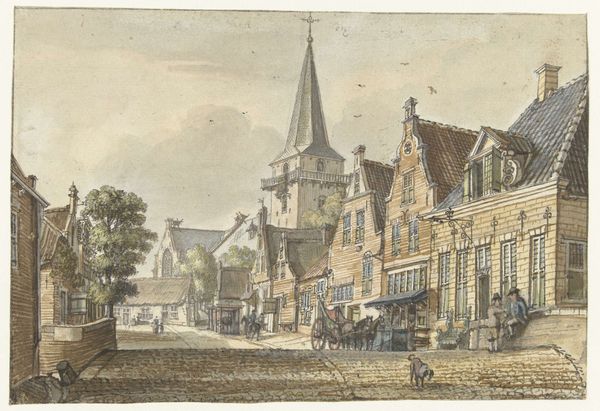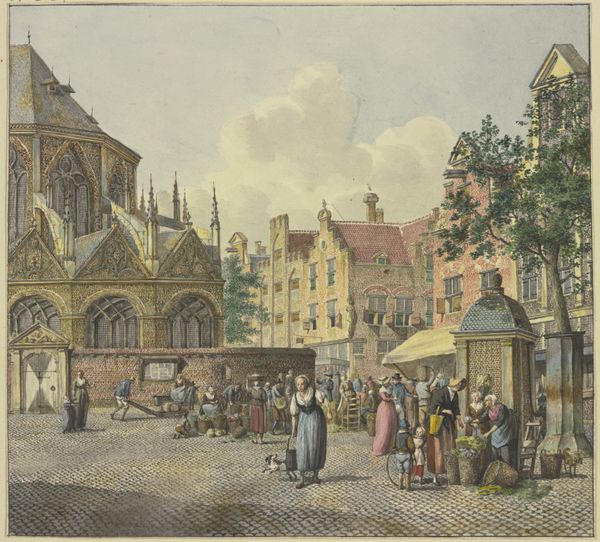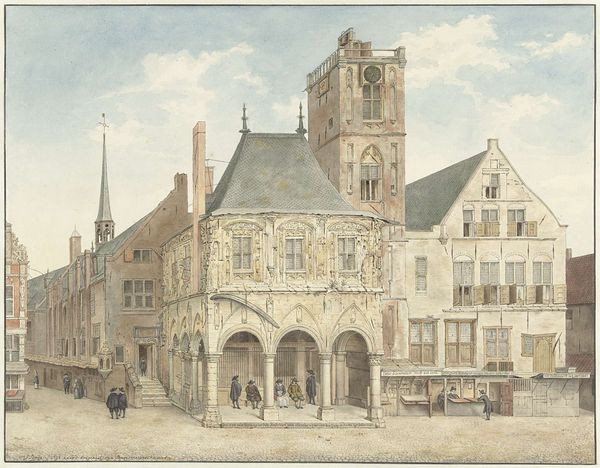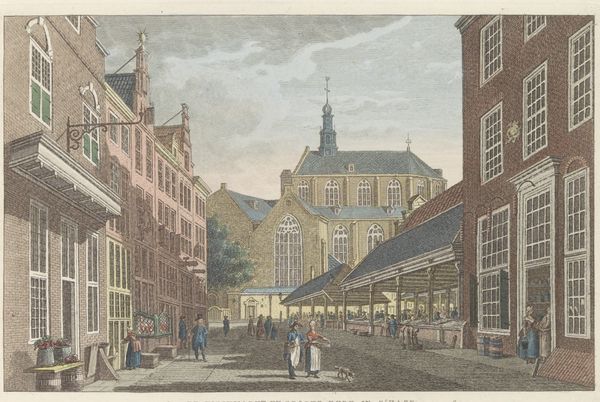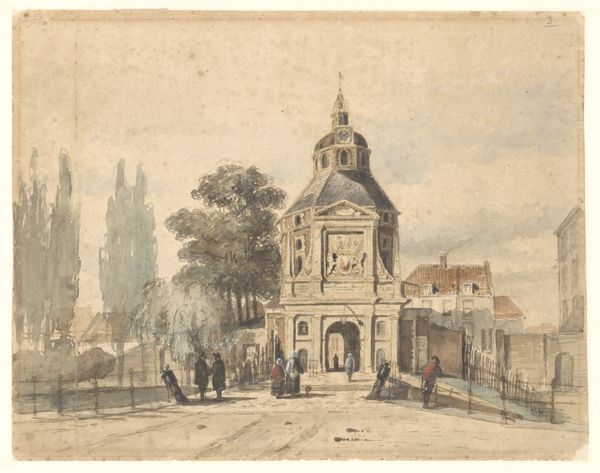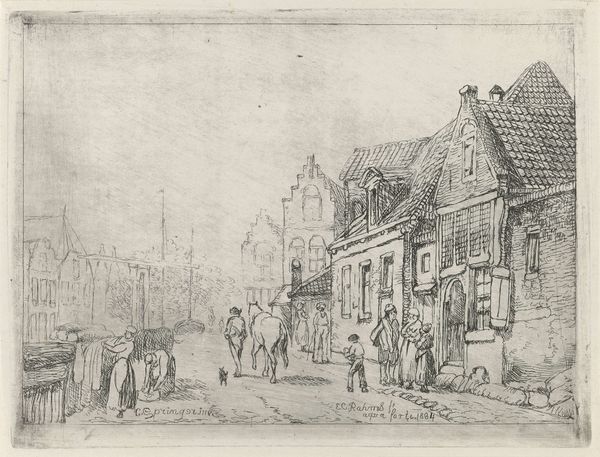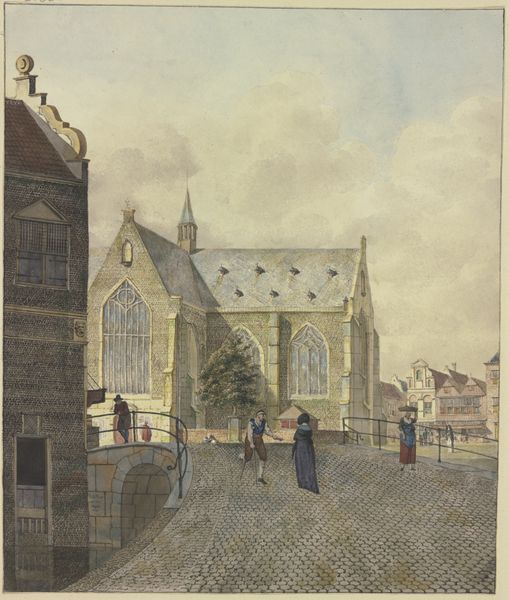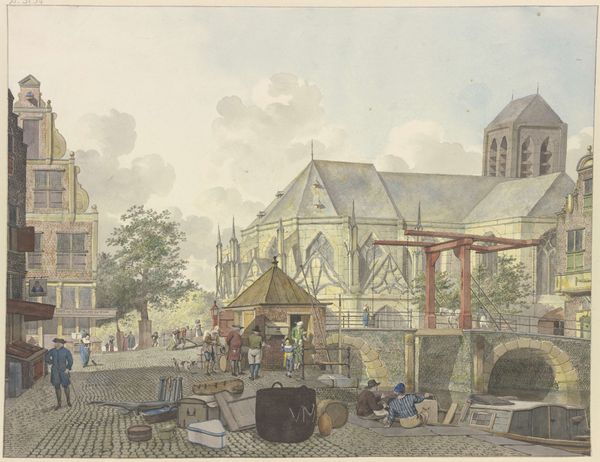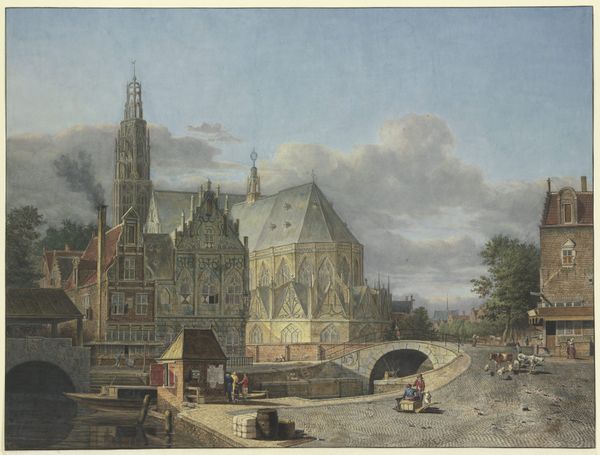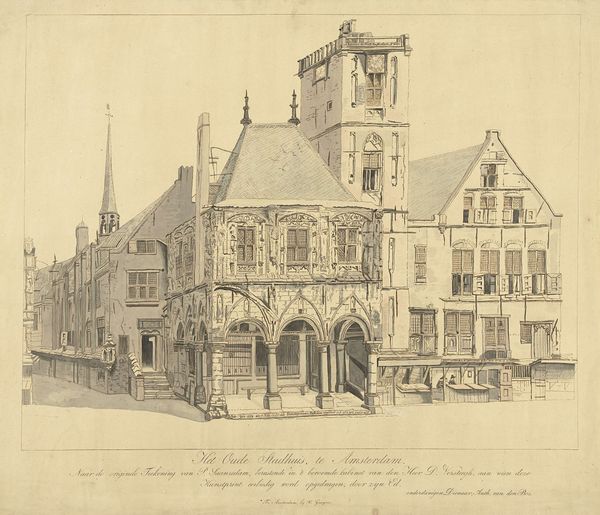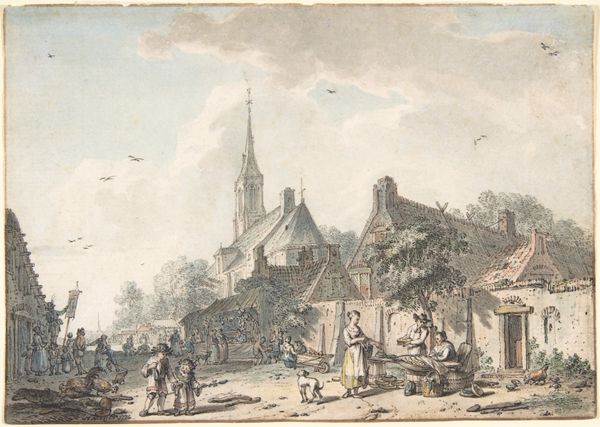
Schleusentor bei einer Kirche, links eine verschleierte Dame, ein Offizier und eine Dame mit einem Knaben
0:00
0:00
drawing, painting, gouache, paper, watercolor
#
drawing
#
netherlandish
#
painting
#
gouache
#
landscape
#
paper
#
watercolor
#
coloured pencil
#
15_18th-century
#
cityscape
#
genre-painting
#
watercolor
#
realism
Copyright: Public Domain
Curator: Let’s discuss Johannes Huibert Prins's "Schleusentor bei einer Kirche, links eine verschleierte Dame, ein Offizier und eine Dame mit einem Knaben"—or "Lock Gate Near a Church, with a Veiled Lady, an Officer, and a Lady with a Boy"—a cityscape executed in gouache, watercolor, and colored pencil. Editor: Immediately, I notice the sheer amount of activity captured in this rendering. The buildings give way to bustling workers at a canal. The drawbridge suggests a nexus of exchange, while figures in the foreground carry baskets and goods. It all emphasizes labor. Curator: Precisely. Prins's work gives us a glimpse into Dutch society during the 18th century. Note how the veiled woman contrasts with the working-class figures—suggesting a complex stratification of Dutch society at that time. What are your thoughts on the figures gathered by the waterway? Editor: It seems that it's the wealthier citizens who gather on the banks for leisure while a single working-class woman rushes over the bridge carrying a basket. These divisions of labor, and even leisure, solidify those social stratifications you mentioned, giving form to identity. Curator: Looking closely, we can identify signifiers of gender at play, and note the hierarchies inherent in the arrangement of figures; The officer in his regalia is clearly marked apart from the anonymous toiling workers behind him. Editor: Yes, the costuming speaks volumes. Even in this idyllic scene, there’s an emphasis on the mechanisms of social division. The textures of labor and class distinction are materially present, informing our understanding. Curator: In the landscape itself, the church stands as a stable edifice against the movements of everyday life; but note how Prins situates it at a slightly awkward, tilted angle. Do you think there's some disruption of tradition at play? Editor: Perhaps Prins subtly questioned the power of the church. Or maybe it was purely pragmatic, focusing on capturing the visual accuracy of this gate within the social contexts. It’s about the production of an image reflecting, or even shaping, society. Curator: In either case, it makes the familiar, suddenly unfamiliar. Editor: And by drawing attention to material conditions of the people there. Well, considering it from both ends is very fruitful. Thanks!
Comments
No comments
Be the first to comment and join the conversation on the ultimate creative platform.

